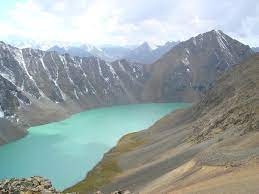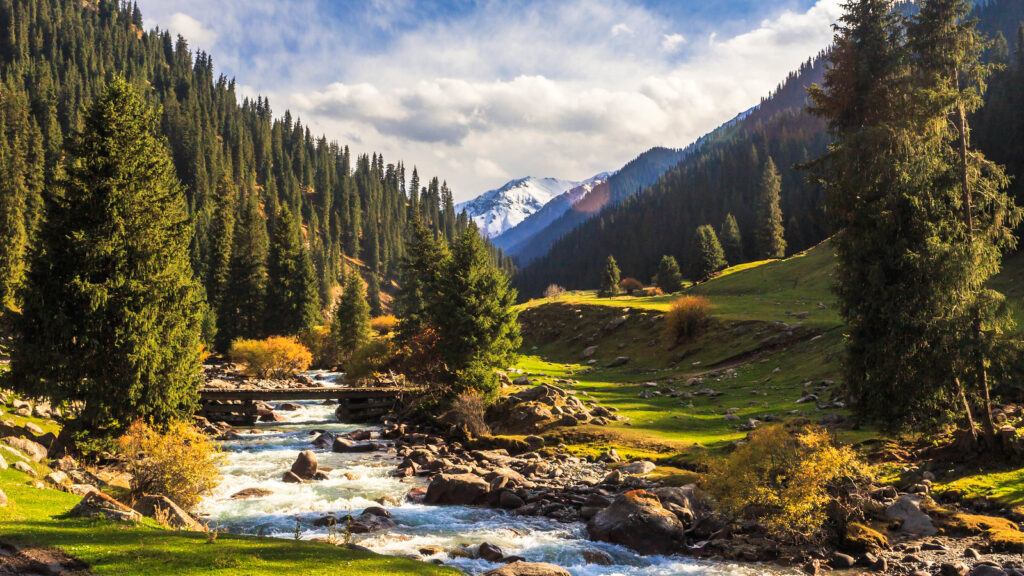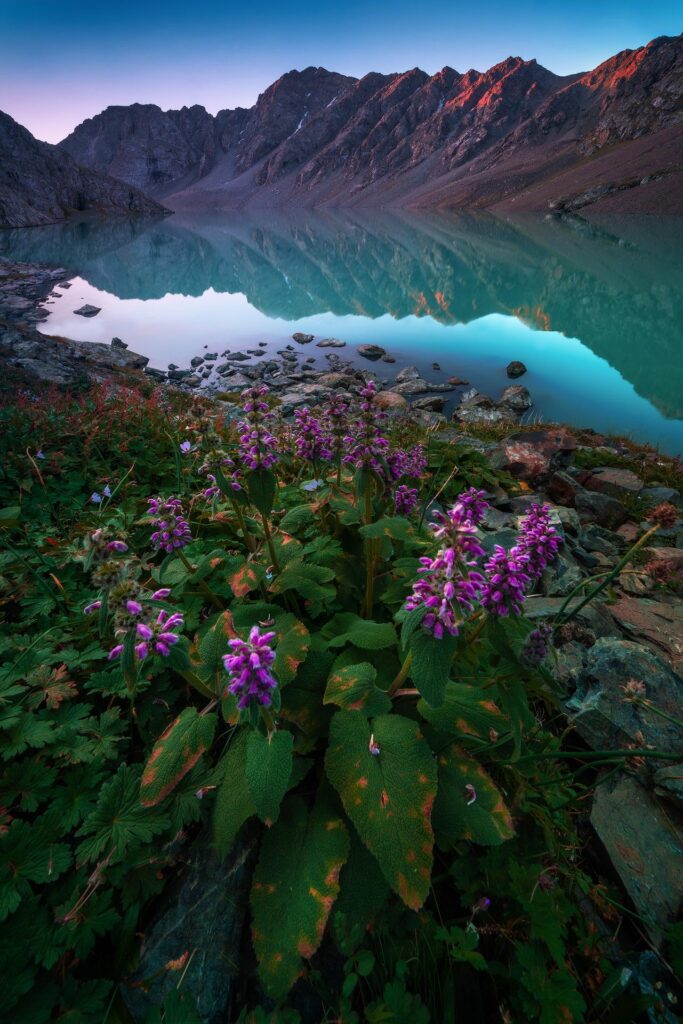Overview
Ala-Kul is a beautiful high-altitude lake located in the Terskey Alatau mountain range in Kyrgyzstan. It’s known for its stunning turquoise waters and its position at an elevation of about 11,590 feet (3,533 meters) above sea level. The trek to Ala-Kul Lake is quite popular among hikers and adventure enthusiasts, offering breathtaking views of the surrounding mountains, glaciers, and diverse landscapes. The hike usually takes a couple of days and is considered moderately challenging due to the elevation gain, but the reward of reaching the lake is absolutely worth it!
Can you suggest the best time to visit?
The best time to visit Ala-Kul Lake largely depends on what you want to experience. The trek to the lake is generally accessible from late June to early September when the weather is milder, and the paths are free from heavy snow. During this period, the temperatures are more favorable for hiking, and the landscape is vibrant with blooming flowers and greenery.
If you prefer warmer weather and want to witness the full bloom of the surrounding flora, late July to August is ideal. However, keep in mind that this is also the peak tourist season, so the trails might be more crowded.
For a quieter experience and to avoid the peak season rush, consider visiting in June or early September. Just note that in June, you might encounter some remaining snow or cooler temperatures, while in September, the weather can be more unpredictable as it transitions towards autumn.
Ultimately, the best time for you to visit will depend on your preferences for weather, crowd levels, and the kind of experience you seek.
What are the most popular trekking routes?
Trekking to Ala-Kul Lake offers various routes, each with its own unique charms and challenges. Here are a couple of popular routes:
Jeti Oguz to Ala-Kul:
Jeti Oguz, known for its red rock formations, serves as a starting point for this route. The trail takes you through stunning landscapes, including forests, meadows, and eventually leads to the lake. This route can take around 3-4 days to complete, depending on your pace and stops along the way.
Karakol to Ala-Kul:
Starting from the town of Karakol, this route is slightly longer and offers diverse scenery. You’ll pass through coniferous forests, alpine meadows, and may encounter yurts along the way. This trek can take about 4-5 days to complete, allowing for a more immersive experience in the surroundings.
Both routes offer magnificent views and opportunities to camp or stay in yurts, allowing trekkers to immerse themselves in the stunning landscapes and the local culture. It’s essential to be prepared for changes in weather, as conditions can vary due to the high altitude.
It’s always a good idea to check in with local guides or tour operators for the most updated information and guidance, especially if you’re not familiar with the area or trekking at high altitudes.
What gear is essential for trekking?
For a trek to a high-altitude destination like Ala-Kul Lake, having the right gear is crucial. Here’s a list of essential items:
Sturdy Hiking Boots:
Comfortable, well-fitted, and broken-in hiking boots are a must for tackling varying terrain.
Appropriate Clothing:
Dressing in layers is key. Bring moisture-wicking base layers, insulating mid-layers, a waterproof and windproof outer layer, and quick-drying hiking pants. Don’t forget gloves, a hat, and extra socks.
Backpack:
A well-fitted backpack to carry your essentials comfortably. Consider a rain cover for it, too.
Tent and Sleeping Bag:
If planning to camp, a reliable tent and a sleeping bag suitable for low temperatures are necessary.
Navigation Tools:
Maps, a compass, or a GPS device to navigate the trails. Also, having a guide or being familiar with the route is advisable.
Food and Water:
High-energy, non-perishable food items, and a reliable water purification system or water purification tablets to ensure safe drinking water.
First Aid Kit:
Essential medical supplies and personal medications.
Headlamp/Flashlight:
Essential for navigating in low-light conditions.
Sun Protection:
Sunscreen, sunglasses, and a hat to protect against the sun’s rays, which can be quite intense at higher altitudes.
Emergency Supplies:
A whistle, multi-tool, and a lightweight emergency blanket can be extremely helpful in unforeseen situations.
Trekking Poles:
These can assist in stability and reducing strain, especially on steep ascents and descents.
It’s important to pack as lightly as possible while ensuring you have all the necessary gear for safety and comfort. The weight of your backpack can significantly impact your trekking experience. Also, being prepared for sudden weather changes is crucial when trekking in mountainous regions.



